How do we choose the right wiring when installing a solar system?
When embarking on the journey of installing a solar system, much of the focus rightly lands on the panels, the inverter, and the mounting hardware. However, an often-overlooked yet critically important component is the wiring. The humble electrical cables are the circulatory system of your entire solar array, responsible for carrying the precious harvested energy from the panels to your home. Choosing the wrong wiring is not just an efficiency loss; it's a significant safety hazard that can lead to voltage drops, power loss, overheating, and even electrical fires. The right wiring ensures that your investment operates at peak performance, delivering maximum returns for decades to come. This comprehensive guide will illuminate the path to selecting the perfect wiring, delving into the technical specifics, environmental considerations, and code requirements that every homeowner and installer must understand.
- Understanding the Electrical Fundamentals of a Solar System
- Key Factors for Selecting Wiring in a Solar System
- Navigating the Specific Components of a Solar System Wiring
- Adhering to Codes and Safety in a Solar System
- Practical Steps and Common Mistakes in a Solar System Wiring Installation
Understanding the Electrical Fundamentals of a Solar System
Before we can dive into wire types and sizes, it's crucial to grasp the basic electrical principles at play in a solar power setup. This foundational knowledge will empower you to make informed decisions rather than just following a chart.
The Critical Role of Current (Amps) and Voltage (Volts)
Every electrical circuit is defined by its current (measured in Amperes, or Amps) and voltage (measured in Volts). In a solar context, current is the "flow" of electricity, while voltage is the "pressure" pushing it. Your solar panels generate a specific amount of current (Imp) and voltage (Vmp) at their maximum power point. The wiring must be sized to handle the maximum current without overheating. Furthermore, the system voltage—whether it's a 12V, 24V, or more commonly for home systems, a high string voltage of 600V or even 1000V—directly impacts the choice of wire, particularly its insulation rating.
The Peril of Voltage Drop
Voltage drop is the silent thief of solar efficiency. It refers to the loss of voltage that occurs as electricity travels over a distance through a wire due to the inherent resistance of the copper or aluminum. The longer the wire run and the smaller the wire's cross-sectional area, the higher the resistance and the greater the voltage drop. A significant voltage drop means your inverter receives less power than your panels are producing. As a rule of thumb, the National Electrical Code (NEC) recommends designing systems to keep the voltage drop in the DC circuits between the panels and the inverter to less than 2%. This ensures that over 98% of the power your panels generate is actually converted for use.
Direct Current (DC) vs. Alternating Current (AC) Wiring
A solar system has two distinct electrical domains: DC and AC. The side from the panels up to the inverter deals with high-voltage Direct Current (DC). After the inverter, the electricity is converted to Alternating Current (AC) for use in your home. DC wiring is subject to different, often more stringent, requirements than AC wiring. DC circuits can sustain arcs more easily, which is why they require special disconnect switches and breakers rated for DC use. The wiring principles for both involve managing current and voltage drop, but the specific wire types and connectors can differ.
Key Factors for Selecting Wiring in a Solar System
With the fundamentals in place, we can now explore the specific criteria that will guide your wire selection process. This is where theory meets practice.
Wire Gauge (Size) – The Most Critical Decision
Wire gauge, typically measured in American Wire Gauge (AWG), indicates the cross-sectional area of the conductor. It's a counter-intuitive system: a smaller AWG number means a larger wire. Sizing is paramount.
Ampacity: This is the maximum current a wire can carry continuously without exceeding its temperature rating. You must select a wire with an ampacity that exceeds the maximum possible current in the circuit. For solar panel strings, this is typically 1.56 times the Isc (Short-Circuit Current) of the string as per NEC guidelines.
Accounting for Voltage Drop: Even if a wire's ampacity is sufficient, you must calculate the voltage drop for your specific run length. For long runs between the array and the inverter, you will often need to upsize the wire gauge (e.g., go from 10 AWG to 8 AWG) solely to minimize voltage drop and preserve system efficiency. Online voltage drop calculators are invaluable tools for this.
Conductor Material – Copper is King
The two main choices for conductor material are copper and aluminum.
Copper: This is the undisputed standard for solar installations, especially for the DC side. Copper has higher conductivity, is more ductile (less likely to break from vibration or movement), and forms more reliable connections. While more expensive, its superior performance and safety make it the only choice for most residential solar applications.
Aluminum: Aluminum is sometimes used for very large gauge service entrance cables on the AC side due to its lower cost and weight. However, it requires larger sizes to carry the same current as copper, is more prone to oxidation (which can lead to poor connections and overheating), and requires special lugs and anti-oxidant paste for termination. For the critical DC circuits of a solar system, copper is strongly recommended.
Insulation Type and Rating – Withstanding the Elements
The insulation surrounding the wire is its protective shell. In a solar system, wiring is exposed to extreme conditions, and the insulation must be rated for them.
Sunlight and UV Resistance: Outdoor wiring must have insulation that is sunlight-resistant (marked with a "Sunlight Resistant" or "SR" designation) to prevent degradation and cracking from prolonged UV exposure.
Temperature Rating: Wires are rated for the maximum temperature their insulation can handle (e.g., 60°C, 75°C, 90°C). A higher temperature rating (90°C is common for solar) allows the wire to handle more current and better withstand the heat trapped under solar panels, which can easily exceed ambient air temperatures.
Water and Moisture Resistance: The insulation should be rated for wet locations. The most common and recommended insulation type for outdoor DC solar wiring is USE-2 (Underground Service Entrance) or the more robust PV Wire.
The Importance of PV Wire: PV Wire is a superior product specifically designed for photovoltaic applications. It has a thicker, more durable insulation, is more flexible at cold temperatures, and is subjected to a more rigorous flame test than USE-2. While USE-2 is acceptable and was the historical standard, PV Wire is becoming the new benchmark for quality and safety in modern solar installations.
Navigating the Specific Components of a Solar System Wiring
A solar array is made up of several interconnected parts, each with its own wiring considerations.
Solar Panel Leads and MC4 Connectors
Most modern solar panels come pre-equipped with attached "leads"—wires about 12-18 inches long terminated with MC4 connectors. These are specialized, weatherproof, quick-connect plugs. The leads are typically made of fine-stranded, flexible copper wire with insulation rated for outdoor use. It's crucial to ensure that any extensions you make use the same high-quality, flexible PV wire and genuine, compatible MC4 connectors and crimping tools to maintain the weatherproof seal and electrical integrity.
Stringing and Home Run Cables
Panels are wired together in series to form a "string." The wire that connects multiple panels in a string and the final "home run" cable that brings the combined DC power down to the inverter are critical links.
Stringing Cables: These are often short jumper cables with MC4 connectors.
Home Run Cables: These are the long, continuous runs from the array to the inverter. They must be sized carefully to minimize voltage drop and are typically run inside conduit for physical protection. This is where the correct calculation of wire gauge (e.g., 10 AWG, 8 AWG, or 6 AWG) pays the biggest dividends in performance.
Conduit – The Protective Raceway
Conduit is the pipe or tubing that protects the wires from physical damage, pests, and the elements. The choice of conduit material matters.
Metal Conduit (EMT): Offers excellent protection from physical impact and UV rays. It can, however, get very hot in the sun, which may require derating the ampacity of the wires inside.
PVC Conduit: Is resistant to corrosion and does not get as hot as metal. Schedule 80 PVC is thicker and offers better impact resistance than Schedule 40 and is commonly used for exposed runs on rooftops.
The decision often comes down to local code requirements, aesthetic preferences, and the specific installation environment. All wiring inside a building, until it reaches the inverter, must be in metallic conduit as per NEC requirements for DC power conductors.
Adhering to Codes and Safety in a Solar System
Ignorance of the electrical code is not an excuse and can have dangerous consequences. A properly wired solar system is a safe solar system.
The Authority of the National Electrical Code (NEC)
In the United States, the NEC is the benchmark for safe electrical design and installation. Local authorities having jurisdiction (AHJs) adopt the NEC and require permits and inspections for solar installations. Key articles to be aware of include:
NEC Article 690: Solar Photovoltaic Systems. This is the primary section governing everything from circuit sizing and voltage calculation to disconnecting means and wiring methods.
NEC Article 705: Interconnected Electrical Power Production Sources. This covers the connection of your solar system to the utility grid.
Your installation must comply with these codes. A qualified installer will be intimately familiar with them.
Grounding – A Non-Negotiable Safety Practice
Proper grounding is essential for protecting against electrical shocks and lightning-induced surges. The entire solar array frame and metal components must be bonded together and connected to a grounding electrode system (ground rod). Furthermore, the DC circuit itself often requires a functional ground. This involves using a specific type of wire, typically bare copper or green-insulated, to create this safe path for fault currents. The rules for grounding in NEC Article 690 are detailed and must be followed precisely.
The Importance of Proper Labeling
The NEC has specific requirements for labeling all components of a solar system. This includes warning labels indicating that multiple power sources feed a disconnect, labels showing the maximum system voltage and current, and identifying the location of all disconnect switches. Proper labeling is crucial for the safety of firefighters and future technicians who may need to service the system.
Practical Steps and Common Mistakes in a Solar System Wiring Installation
Let's translate this knowledge into a practical, step-by-step approach and highlight pitfalls to avoid.
A Step-by-Step Wire Selection Guide
1. Determine Circuit Parameters: For each circuit (string, home run, AC), note the maximum current (using 1.56 x Isc for DC) and the total circuit voltage.
2. Calculate Minimum Ampacity: Use NEC tables to find a wire gauge whose ampacity (adjusted for temperature and conduit fill) exceeds your calculated current.
3. Calculate Voltage Drop: Using the wire gauge from step 2, calculate the voltage drop for the actual length of the wire run. If it exceeds 2%, go up one wire gauge size and recalculate until it falls below the threshold.
4. Select Wire Type: Choose a copper wire with the appropriate insulation. PV Wire is the gold standard for all outdoor DC circuits. For AC circuits, THHN/THWN-2 inside conduit is standard.
5. Choose Conduit Size: Size the conduit according to NEC Chapter 9 tables based on the number and size of wires you are running, ensuring you do not exceed the maximum fill rating.
Cost vs. Quality – A Long-Term Perspective
It can be tempting to save a few dollars by purchasing lower-grade cable or undersizing the wire. This is a classic false economy. The cost of the wire is a tiny fraction of the total system cost, but the energy losses from an undersized wire will compound over the 25+ year life of the system, costing you far more in lost electricity. Furthermore, the safety risks of using substandard wiring are simply not worth it. Always invest in high-quality, correctly sized components.
Common Wiring Mistakes to Avoid
Mixing Connector Brands: MC4 connectors are a standard, but different brands may not be fully compatible and can create a poor connection or a fire hazard. Stick to one reputable brand and use the proper crimping tool.
Ignoring Expansion and Contraction: Wires on a roof expand and contract with temperature changes. Leave slack in the wires at connection points—do not pull them taut.
Poor Grounding: Sloppy grounding connections are a frequent source of system faults and safety issues. Use listed grounding hardware (e.g., lugs, washers) and ensure all connections are tight.
DIY Without Expertise: While a knowledgeable homeowner can undertake a solar project, the complexity of the electrical work, especially the DC high-voltage side, is significant. A single wiring error can be catastrophic. For most people, hiring a certified and licensed professional is the safest and most reliable path to a successful installation.







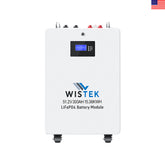
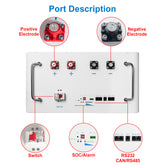
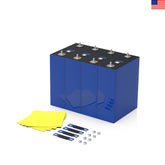
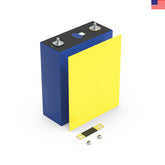



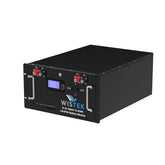
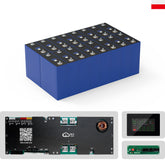



Leave a comment
All blog comments are checked prior to publishing